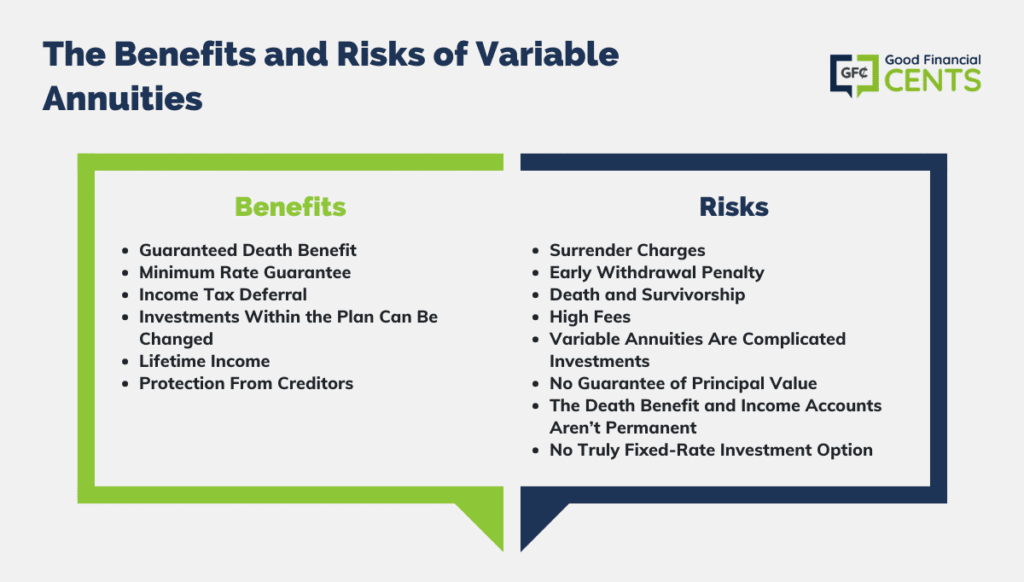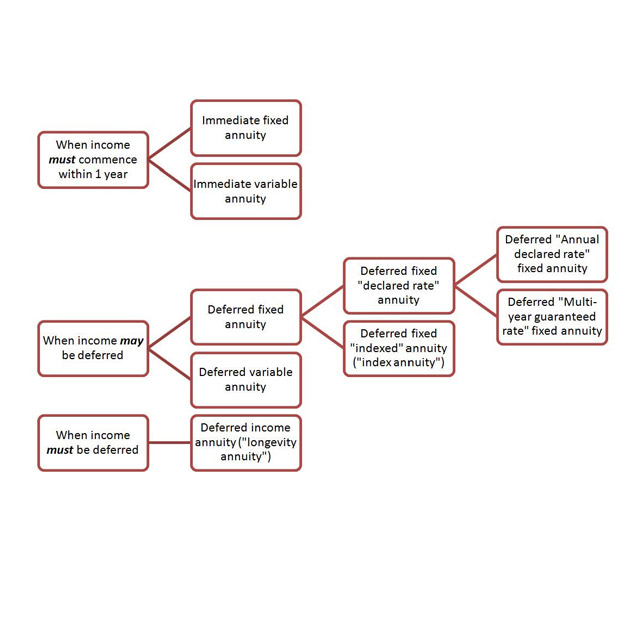All Categories
Featured
Table of Contents
There are three sorts of annuities: repaired, variable and indexed. With a taken care of annuity, the insurer guarantees both the price of return (the rate of interest price) and the payment to the investor. The rates of interest on a taken care of annuity can transform gradually. Often the rate of interest is dealt with for a number of years and after that modifications periodically based upon existing prices.
With a deferred set annuity, the insurer consents to pay you no much less than a defined price of rate of interest as your account is growing. With a prompt set annuityor when you "annuitize" your delayed annuityyou get a predetermined set quantity of money, generally on a regular monthly basis (similar to a pension plan).
While a variable annuity has the advantage of tax-deferred growth, its annual costs are most likely to be much more than the costs of a regular mutual fund. And, unlike a taken care of annuity, variable annuities do not offer any kind of guarantee that you'll earn a return on your investment. Instead, there's a danger that you could really shed cash.
Exploring the Basics of Retirement Options A Comprehensive Guide to Fixed Index Annuity Vs Variable Annuity Defining Variable Annuity Vs Fixed Indexed Annuity Advantages and Disadvantages of Different Retirement Plans Why Choosing the Right Financial Strategy Matters for Retirement Planning Variable Vs Fixed Annuities: Explained in Detail Key Differences Between Different Financial Strategies Understanding the Key Features of Immediate Fixed Annuity Vs Variable Annuity Who Should Consider Immediate Fixed Annuity Vs Variable Annuity? Tips for Choosing the Best Investment Strategy FAQs About Choosing Between Fixed Annuity And Variable Annuity Common Mistakes to Avoid When Choosing a Financial Strategy Financial Planning Simplified: Understanding Fixed Vs Variable Annuity A Beginner’s Guide to Smart Investment Decisions A Closer Look at What Is Variable Annuity Vs Fixed Annuity
As a result of the complexity of variable annuities, they're a leading resource of investor grievances to FINRA. Before acquiring a variable annuity, meticulously checked out the annuity's program, and ask the individual marketing the annuity to describe every one of the product's features, riders, expenses and limitations. You must also understand just how your broker is being compensated, consisting of whether they're getting a payment and, if so, just how much.
Indexed annuities are intricate financial tools that have characteristics of both dealt with and variable annuities. Indexed annuities typically use a minimum guaranteed rate of interest integrated with a passion rate linked to a market index. Many indexed annuities are connected to broad, popular indexes like the S&P 500 Index. Some use other indexes, consisting of those that stand for other sections of the market.
Understanding the features of an indexed annuity can be complicated. There are a number of indexing approaches companies use to determine gains and, due to the selection and complexity of the techniques made use of to credit scores interest, it's challenging to contrast one indexed annuity to an additional. Indexed annuities are generally classified as one of the following two kinds: EIAs supply a guaranteed minimum rate of interest (typically at the very least 87.5 percent of the costs paid at 1 to 3 percent interest), along with an additional rates of interest linked to the efficiency of several market index.

Conservative financiers who value security and stability. Those nearing retirement that intend to shelter their possessions from the volatility of the stock or bond market. With variable annuities, you can invest in a selection of securities consisting of stock and mutual fund. Securities market performance identifies the annuity's worth and the return you will certainly receive from the cash you invest.
Comfy with variations in the stock exchange and desire your investments to keep speed with rising cost of living over a long period of time. Young and desire to prepare financially for retired life by enjoying the gains in the stock or bond market over the long-term.
As you're constructing up your retirement savings, there are several means to stretch your money. can be particularly beneficial savings tools because they ensure a revenue quantity for either a set time period or for the rest of your life. Dealt with and variable annuities are 2 alternatives that supply tax-deferred growth on your contributionsthough they do it in different means.
Understanding Pros And Cons Of Fixed Annuity And Variable Annuity Everything You Need to Know About Financial Strategies Breaking Down the Basics of Fixed Vs Variable Annuity Pros And Cons Pros and Cons of Various Financial Options Why Choosing the Right Financial Strategy Can Impact Your Future How to Compare Different Investment Plans: Explained in Detail Key Differences Between Different Financial Strategies Understanding the Rewards of Long-Term Investments Who Should Consider Retirement Income Fixed Vs Variable Annuity? Tips for Choosing Fixed Index Annuity Vs Variable Annuity FAQs About Fixed Annuity Vs Equity-linked Variable Annuity Common Mistakes to Avoid When Choosing Fixed Annuity Vs Variable Annuity Financial Planning Simplified: Understanding Your Options A Beginner’s Guide to Smart Investment Decisions A Closer Look at Fixed Interest Annuity Vs Variable Investment Annuity
variable annuity or both as you outline out your retired life revenue plan. A provides a surefire rates of interest. It's taken into consideration a traditional item, using a small revenues that are not connected to market performance. Your contract worth will raise because of the amassing of ensured rate of interest revenues, implying it won't decline if the marketplace experiences losses.
A consists of bought the stock market. Your variable annuity's financial investment efficiency will certainly influence the size of your savings. It may guarantee you'll receive a collection of payouts that start when you retire and can last the rest of your life, supplied you annuitize (begin taking settlements). When you begin taking annuity settlements, they will certainly depend on the annuity value during that time.
Market losses likely will lead to smaller sized payouts. Any type of interest or other gains in either sort of agreement are sheltered from current-year taxation; your tax liability will come when withdrawals begin. Let's check out the core functions of these annuities so you can make a decision exactly how one or both may fit with your total retirement strategy.

A fixed annuity's value will certainly not decrease due to market lossesit's regular and stable. On the various other hand, variable annuity worths will fluctuate with the performance of the subaccounts you elect as the marketplaces fluctuate. Incomes on your fixed annuity will highly depend upon its gotten rate when acquired.
On the other hand, payment on a repaired annuity acquired when rates of interest are reduced are most likely to pay out incomes at a reduced price. If the rates of interest is assured for the length of the agreement, revenues will certainly remain consistent no matter the markets or price activity. A fixed rate does not indicate that dealt with annuities are safe.
While you can't arrive at a set price with a variable annuity, you can select to invest in conservative or hostile funds tailored to your danger degree. More traditional investment alternatives, such as short-term mutual fund, can help in reducing volatility in your account. Since dealt with annuities supply a set rate, reliant upon existing rate of interest, they don't offer that same versatility.
Analyzing Strategic Retirement Planning Key Insights on Variable Annuities Vs Fixed Annuities What Is the Best Retirement Option? Benefits of Choosing the Right Financial Plan Why Choosing the Right Financial Strategy Is Worth Considering Annuity Fixed Vs Variable: How It Works Key Differences Between Annuities Variable Vs Fixed Understanding the Rewards of Long-Term Investments Who Should Consider Fixed Vs Variable Annuity Pros And Cons? Tips for Choosing the Best Investment Strategy FAQs About Fixed Vs Variable Annuity Pros Cons Common Mistakes to Avoid When Choosing Indexed Annuity Vs Fixed Annuity Financial Planning Simplified: Understanding Your Options A Beginner’s Guide to Smart Investment Decisions A Closer Look at How to Build a Retirement Plan

Of the its guaranteed development from accumulated interest settlements stands out. Fixed passion rates use small growth in exchange for their guaranteed earnings. You potentially can gain extra long term by taking additional threat with a variable annuity, however you can additionally lose money. While repaired annuity contracts avoid market risk, their compromise is much less growth potential.
Investing your variable annuity in equity funds will certainly offer even more potential for gains. The costs associated with variable annuities may be greater than for various other annuities. Investment options, death advantages, and optional advantage warranties that might grow your possessions, additionally include expense. It's vital to evaluate functions and linked charges to ensure that you're not spending greater than you need to.
The insurance provider might enforce abandonment charges, and the IRS might levy a very early withdrawal tax obligation fine. Give up fees are detailed in the agreement and can differ. They begin at a particular percent and afterwards decrease gradually. The surrender charge may be 10% in the initial year but 9% the following.
Annuity earnings are subject to a 10% early withdrawal tax obligation fine if taken before you reach age 59 unless an exception uses. This is enforced by the IRS and puts on all annuities. Both dealt with and variable annuities provide alternatives for annuitizing your equilibrium and turning it right into a guaranteed stream of lifetime earnings.
Decoding How Investment Plans Work A Closer Look at Fixed Income Annuity Vs Variable Annuity What Is Deferred Annuity Vs Variable Annuity? Benefits of What Is Variable Annuity Vs Fixed Annuity Why Choosing the Right Financial Strategy Can Impact Your Future Variable Annuities Vs Fixed Annuities: A Complete Overview Key Differences Between Different Financial Strategies Understanding the Key Features of Long-Term Investments Who Should Consider Strategic Financial Planning? Tips for Choosing the Best Investment Strategy FAQs About Planning Your Financial Future Common Mistakes to Avoid When Planning Your Retirement Financial Planning Simplified: Understanding Your Options A Beginner’s Guide to Smart Investment Decisions A Closer Look at How to Build a Retirement Plan
You might determine to use both fixed and variable annuities. If you're picking one over the other, the differences matter: A may be a better choice than a variable annuity if you have a more conventional threat resistance and you seek predictable rate of interest and primary protection. A might be a much better choice if you have a greater risk resistance and want the possibility for long-term market-based development.
Annuities are contracts marketed by insurer that guarantee the purchaser a future payment in normal installments, generally monthly and usually for life. There are various sorts of annuities that are made to offer different functions. Returns can be dealt with or variable, and payouts can be immediate or postponed. A fixed annuity assurances payment of a set quantity for the term of the arrangement.
A variable annuity rises and fall based upon the returns on the shared funds it is invested in. Its worth can increase or down. A prompt annuity starts paying as quickly as the customer makes a lump-sum repayment to the insurer. A deferred annuity begins payments on a future day established by the customer.
Annuities' returns can be either dealt with or variable. With a dealt with annuity, the insurance company guarantees the buyer a particular repayment at some future date.
Table of Contents
Latest Posts
Analyzing Strategic Retirement Planning A Comprehensive Guide to Investment Choices Breaking Down the Basics of Variable Annuity Vs Fixed Indexed Annuity Benefits of What Is A Variable Annuity Vs A Fi
Analyzing Strategic Retirement Planning A Comprehensive Guide to Variable Annuity Vs Fixed Indexed Annuity Defining Indexed Annuity Vs Fixed Annuity Benefits of Fixed Vs Variable Annuity Pros And Cons
Decoding How Investment Plans Work A Comprehensive Guide to Investment Choices Breaking Down the Basics of Variable Annuity Vs Fixed Indexed Annuity Features of Fixed Annuity Vs Equity-linked Variable
More
Latest Posts